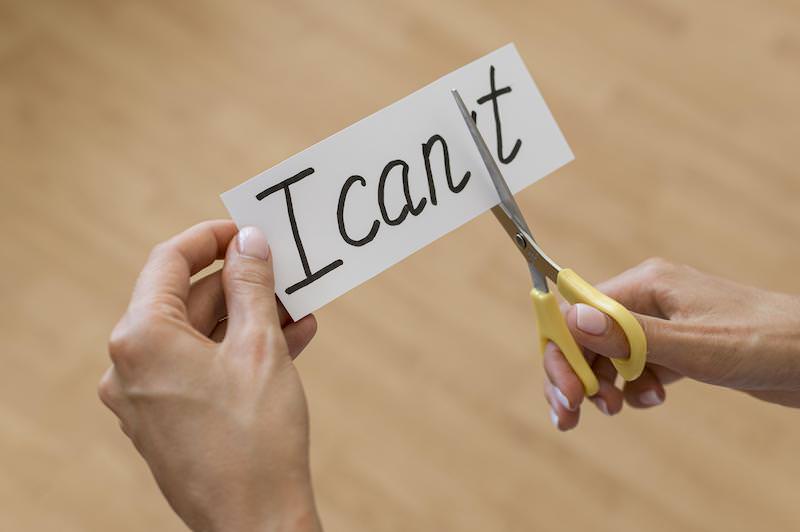Our emotions predominantly dictate how we spend money. We treat ourselves when sad or to celebrate when feeling good. We see something we want – we come up with a thousand excuses for how we deserve it because we identify with a certain feeling.
I’m guilty of practicing the treat yo’ self mentality, and it left me living paycheck to paycheck. There was no stability, only periods of feast and famine. Nothing beats a shopping spree after a bad day – except facing the credit card bill later. Emotions often trigger impulse purchases. Learn how to avoid them without the fear of missing out.
The 30-day rule represents a tool to cut down impulse purchases. When you see something you want (but don’t need), take a picture, or bookmark it. Send the total sum of the purchase to a savings account.
Then, wait for 30 days – if you still want the item, go ahead, and make the purchase. If you don’t, the money stays in your savings account.
What’s Behind The 30-Day Rule

The main goal for the 30-day rule is to change your whole perspective on impulse purchases. An impulse purchase is buying something you weren’t planning to get. It can be buying a sweater, a 4-course restaurant meal, or a luxury vacation.
The average impulse shopper is a young adult and makes 3 impulse purchases per week at the cost of $5,400 a year!
Imagine what you could do with that money, like max out your IRA, pay off a credit card or other debt.
The first step is to understand that the impulse purchase was not your idea. Businesses spend thousands on choosing the best performing ads and methods to provoke an impulse purchase. It involves a lot of psychology and several vital triggers. They rely on promoting a sense of urgency and creating scarcity.
How The 30-Day Rule Destroys Impulse Spending
The 30-day rule helps you decide if the purchase is a real need or a straight want.
When you think of buying something, take a photo of it, write it down, bookmark the page, or put it in your online cart. Put the written note on your desk or fridge, somewhere you’ll be able to keep an eye on.
Let it sit there for 30 days while you think about it, and put the money aside in your savings account.
No one says you won’t be getting the item at the end; give yourself 30 days to find out if you need it. If it’s something that won’t change the quality of your everyday life, you’ll forget about it in no time.
When you decide to buy something after 30 days, it’s no longer an impulse buy. It’s well thought out decision made with a cold head.
The Longterm Effect Of The 30-Day Rule

The primary thing that saves you money or leaves you broke is your spending habits.
Spending money is fun; don’t let anyone tell you otherwise. But the fun ends fast, and then you want to feel it again and again!
With the 30-day rule, you reprogram your spending habits and rethink your purchases every time. You’ll find the money you didn’t think you had!
The rule gives you space and time to research the item you wanted. Write the name down; write the price and the place where you found it. Go home and Google it. You can find it has terrible reviews or maybe there isn’t any discount even though it’s advertised.
Impulse purchases can often be low-quality items that seem so inexpensive. But if you never use something, then that’s money out of the window.
The 30-day rule gives you a sense of comfort during a challenging psychological moment. It reassures you that you can still splurge, but at a later date.
How The 30-day Rule Saves You Money

It’s easy to swipe your card for an impulse purchase – but would you take money out of your savings to pay for it?
By putting aside the money for your impulse purchases you’ll realize they contribute a significant part of your budget.
Think about how many times you’ve caved and clicked an ad or went into a store because you’re stressed or excited, how you used the money to avoid your feelings, or add up to them.
Feelings are not a bad thing, and we have to learn another way to cope with them instead of impulse purchases. That’s the therapeutical side of the 30-day rule.
Spending $10 here and there every couple of days on unnecessary things takes you further away from financial stability. Directing that money towards savings or debt will keep you on track with your financial goals.
Go the extra mile and invest the money saved with the 30-day rule. Look at how they can bring you revenue instead of debt!
The 30-day Rule effect on the FOMO
The fear of missing out is one of the leading triggers for impulse purchases.
Sellers are experts on making you feel like you’re missing on a great deal; something won’t be available at that price anymore or is almost out of stock. They will use power words like “limited edition” or “for two days only” to trap you into thinking you’ll miss out if you wait for 30 days.
It’s essential to understand why you buy. Is it because you’re scared of missing out or because you have an urgent need?
If you entirely ban yourself from buying the item, the FOMO is enormous, which triggers bad feelings. The 30-day rule minimizes the FOMO by keeping the opportunity to indulge open, only at a later date.
Traditional Budgeting vs. The 30-day Rule
When using a budget to control your finances, you can add a category for impulse purchases. While setting a $50 budget for impulse purchases is a planned expense, it doesn’t come close to solving the problem.
With the 30 day rule, you work towards killing the habit of impulse purchases. The practice is eye-opening on how we are easy to manipulate into spending more.
After 30 days, you end up forgetting what you thought you must get right then and there!
Make It A Challenge

What makes people stick to something is holding them accountable.
Share the 30-day rule with a friend or your partner. Tell them you’ll try to practice it and challenge them to join you. You’ll get tempted to cave in almost daily, but having shared your plan will stop you.
Don’t give up! Remember, it takes an average of 66 days for a new behavior to become automatic. At the end of the month, compare notes on how much money each of you saved!
Avoiding Impulse Buying Traps

The impulse spending went up a staggering 18% during the COVID-19 pandemic. It’s certainly not when people had extra money to spend, so what raised the numbers?
People spend, on average, 50% more time on social media since the pandemic started. Everyone’s flooded with ads on every social media- and in the end, they cave in.
There is also an emphasis on self-care and how some purchases will lift your mood.
How to avoid the impulse buying traps sellers use?
- Shop online, especially if you tend to overspend on groceries. Stores pay attention to creating a unique atmosphere that subconsciously leads to unplanned purchases.
- Don’t shop hungry; low sugar makes us cranky, and you’re more prone to making impulse purchases.
- Bring exact cash when you go out to buy specific items.
- Leave your kids and partner at home and shop alone.
- Make a list of the things you need to buy and stick to it.
- Learn to recognize up sale tricks; when you proceed to check out, there are items offered, “especially for you at discounted prices.”
- Don’t go shopping when emotional; whether it’s positive or negative emotions, go for a walk to clear your head.
- Erase your credit card autofill data from shopping websites; there is a lower chance of you purchasing something if you have to get off your couch to get your card.
- Unsubscribe from email lists and turn off shopping app notifications.
- Get off social media; targeted ads are triggering. They lead to buying stuff you don’t need, purchasing celebrities’ products, etc.
Takeaway
It’s surprising how, after years of evolution, it’s still hard for us to practice self-control. We create habits that make us feel comfortable but wreak havoc on our finances.
Fortunately, we’re smart enough to think of tools to fix the situation.
The 30-day rule, if practiced long enough, will become a habit that will teach you how to deal with your emotions and save you serious dollars.
You’ll have enough time to think about how many work hours you’ll throw away by indulging in the purchase.
Like with every other rule, it’s essential to understand that it’s not one size fits all. If you end up waiting every time for that 30-day mark to go and buy the item- this is not your rule.
Look for other saving tips or challenges that will suit your lifestyle better.

